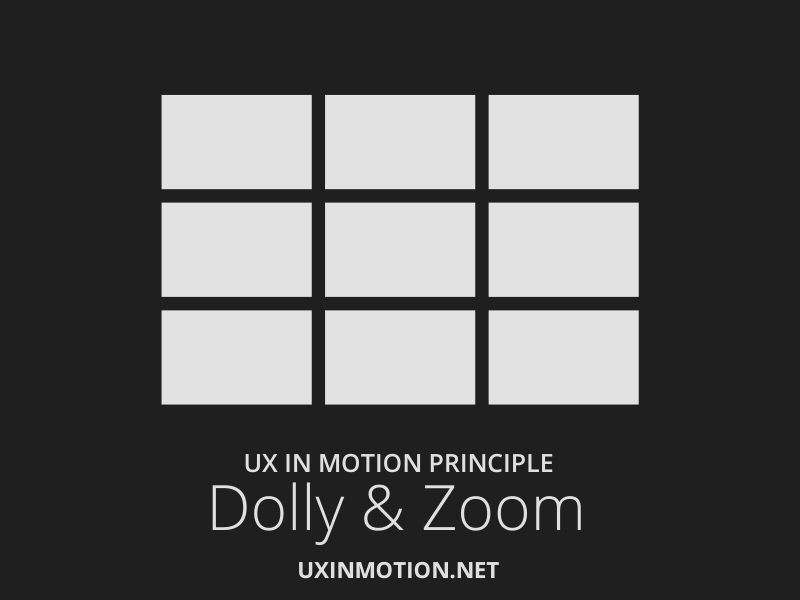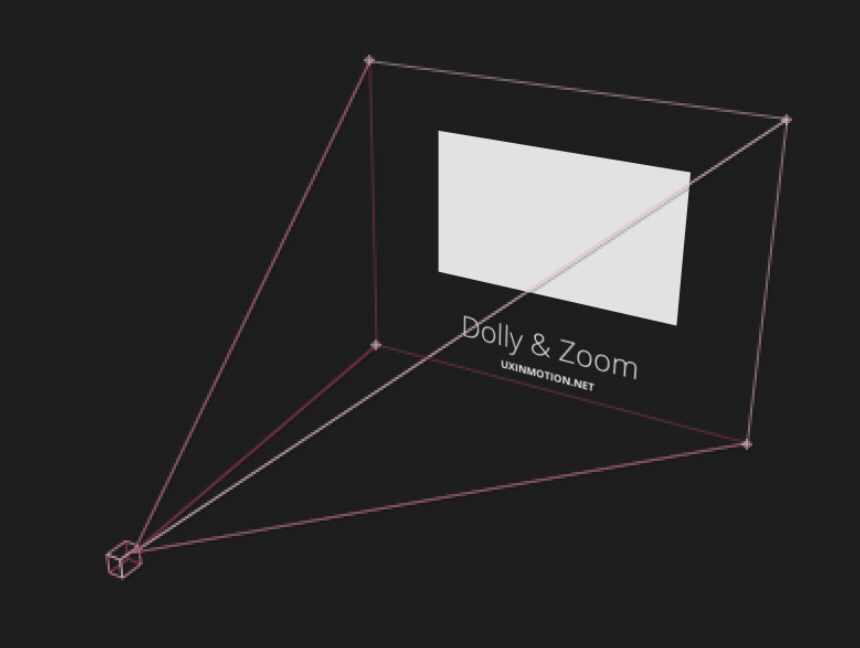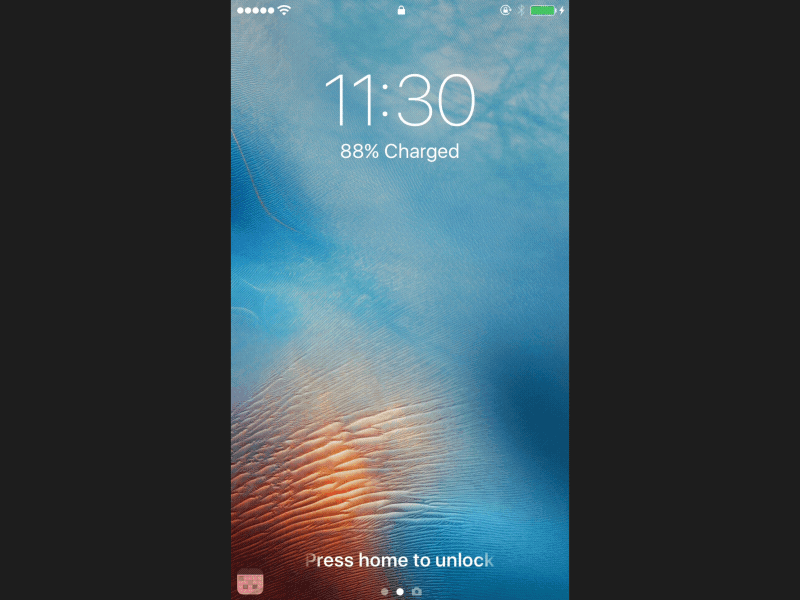Principle 12: Dolly & Zoom
Preserves continuity and spatial narrative when navigating interface objects and spaces.
 Dolly and Zoom are filmic concepts referring to the movement of objects relevant to the camera, and the size of the image itself in the frame smoothly changing from a long shot to a close up shot (or vice versa).
In certain contexts, it is impossible to tell if an object is zooming, if it is moving towards the camera in 3D space, or if the camera is moving towards the object in 3D space (see below references). The below three examples illustrate the possible scenarios.
Dolly and Zoom are filmic concepts referring to the movement of objects relevant to the camera, and the size of the image itself in the frame smoothly changing from a long shot to a close up shot (or vice versa).
In certain contexts, it is impossible to tell if an object is zooming, if it is moving towards the camera in 3D space, or if the camera is moving towards the object in 3D space (see below references). The below three examples illustrate the possible scenarios.
 Is the layer dollying, zooming, or is the camera moving?
As such, it is appropriate to treat the instances of 'dollying' and 'zooming' as separate but similar in that they involve continuous element and scenic transformations, and meet the requirements of the UX in Motion Principles: they support usability through motion.
Is the layer dollying, zooming, or is the camera moving?
As such, it is appropriate to treat the instances of 'dollying' and 'zooming' as separate but similar in that they involve continuous element and scenic transformations, and meet the requirements of the UX in Motion Principles: they support usability through motion.


 The two images on the left are dollying, while the image on the right is zooming
Dolly is a film term and applies to camera movement either toward or away from a subject (it also applies to horizontal 'tracking' movement as well, but is less relevant in a usability context).
The two images on the left are dollying, while the image on the right is zooming
Dolly is a film term and applies to camera movement either toward or away from a subject (it also applies to horizontal 'tracking' movement as well, but is less relevant in a usability context).
 Credit: Apple
Spatially in UX, this motion could refer either to a change in the viewers perspective, or to the perspective remaining static while the object changes position. The Dolly Principle supports usability through continuity and narrative, seamlessly transitioning between interface objects and destinations. Dolly can also incorporate the Dimensionality Principle, resulting in a more spatial experience, more depth, and communicating to the user additional areas or content that is 'in front' or 'behind' the current view.
Zoom refers to events where neither the perspective nor the object is moving spatially, but rather the object itself is scaling (or our view of it is decreasing, resulting in the image enlarging). This communicates to the viewer that additional interface objects are 'inside' other objects or scenes.
Credit: Apple
Spatially in UX, this motion could refer either to a change in the viewers perspective, or to the perspective remaining static while the object changes position. The Dolly Principle supports usability through continuity and narrative, seamlessly transitioning between interface objects and destinations. Dolly can also incorporate the Dimensionality Principle, resulting in a more spatial experience, more depth, and communicating to the user additional areas or content that is 'in front' or 'behind' the current view.
Zoom refers to events where neither the perspective nor the object is moving spatially, but rather the object itself is scaling (or our view of it is decreasing, resulting in the image enlarging). This communicates to the viewer that additional interface objects are 'inside' other objects or scenes.
 Credit: Apple
This allows for seamless transitions - both realtime and non-realtime - that support usability. This seamlessness employed in the Dolly & Zoom Principle is quite powerful when it comes to creating spatial mental models.
Credit: Apple
This allows for seamless transitions - both realtime and non-realtime - that support usability. This seamlessness employed in the Dolly & Zoom Principle is quite powerful when it comes to creating spatial mental models.